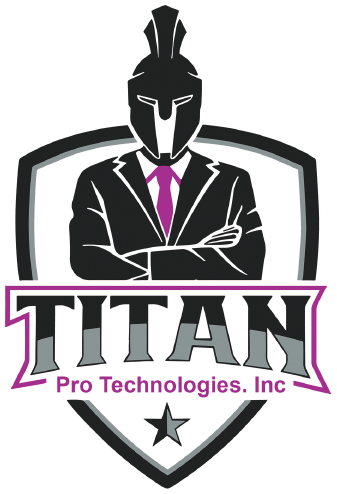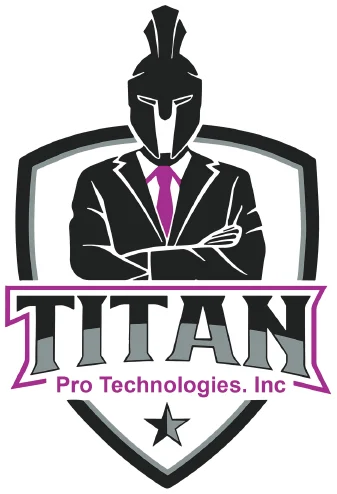Think about the last time you lost a job to a competitor. Was it because their work was better or their price was different? Now, imagine never second-guessing your pricing again. No more worrying if you’re too high or too low. No more scrambling to justify your rates to customers.
A consistent and profitable pricing strategy helps you win jobs and grow your business. Pricing isn’t just about numbers on a page; it’s the foundation of your success as an electrical contractor. Without structure, you risk undervaluing your work or driving clients away. That’s where a well-crafted electrical contractor’s pricing manual comes in.
In this blog, let’s walk you through the key elements of a successful pricing strategy and how to implement one that works for you.
Why Pricing Is Critical For Electrical Contractors
Proper pricing keeps the bottom line healthy. It ensures sustainable income for the electrical contractors by covering costs of labor and profit margins through well-structured pricing manuals, which prevent misconstruing value pricing that may lead to either underpricing or overpricing.
Fast and accurate tools can relieve some workload by manually updating or installing a change so businesses can keep up-to-date without spending much time keeping up with prices and costs.
Everyday Pricing Mistakes Contractors Make
Many contractors lose money due to common pricing errors, such as:
- Undervaluing Labor Costs – The technician’s wage, the cost of training, and the cost of benefits are not accounted for. These will effectively make the contractors lose.
- Ignoring Overhead Expenses – Insurance, administrative, and vehicle maintenance expenses would reduce the profit margin.
- Inconsistent Pricing – The same job would be referred to different technicians without a unified pricing system. Still, it would not be charged a standard price because of customer confusion and loss of confidence.
- Failing to Adjust for Market Changes – Material costs vary and can cause one to lose without noticing if prices are not updated regularly.
Setting the optimal price should equate affordability for customers versus the ratio at which it is profitable to a business. The contractors need to compare local market rates with the need to ensure any work can at least cover its costs and contribute to the growth fund of the company.
Flat-rate pricing models supported digitally through price books allow businesses to make upfront transparent pricing while securing margins. Electrical contractors remain competitive without compromising profits using industry-supported pricing resources like NECA guides and ServiceTitan-developed pricing solutions.
What is an Electrical Contractor's Pricing Manual?
An electrical contractor’s pricing manual outlines the price standardization of various electrical services. It includes labor hours, materials, overhead, and profit margins. As a result, consistency in the job cost estimates is created. It aims to help contractors with transparent, accurate, and fair pricing that keeps them profitable.
A pricing manual standardizes and makes fixed prices for specific services so that no guesswork is involved. Whether charges are made at an hourly rate or set per job, each technician or salesperson knows exactly how to price their service. This results in less confusion and variance in estimates; it should also improve transparency and competitive yet profitable pricing.
Benefits For Electrical Businesses
- Small Businesses: Provides a foundation for consistent pricing, helping new contractors establish credibility and avoid undercharging.
- Medium Businesses: Enhances efficiency in quoting and bidding, reducing the time spent on manual calculations.
- Large Businesses: Streamlines operations by ensuring pricing consistency across multiple teams and locations, preventing revenue loss from misquoted jobs.
A well-maintained pricing manual benefits electrical businesses of all sizes by improving accuracy, enhancing customer trust, and increasing profitability.
Key Elements Of An Effective Pricing Manual
Labor Costs and Hourly Rates Calculation
Define the process for calculating labor costs, including base wages, benefits, payroll taxes, and other expenses. Outline how to set hourly rates based on skill levels, project complexity, and market standards. Ensure consistency in pricing to maintain profitability.
Material Costs & Supplier Relationships
Detail how to source materials, negotiate pricing with suppliers, and account for fluctuations in material costs. Establish relationships with reliable vendors to ensure timely delivery and cost control. Include a pricing structure that reflects material markups while staying competitive.
Overhead Costs and Profit Margins
Specify how to factor in overhead costs, such as insurance and administrative expenses. Define target profit margins to ensure sustainable growth and long-term financial stability. Provide a framework for adjusting pricing based on market conditions and business goals.
Project-Based vs. Time-Based Pricing Strategies
Clarify when to use project-based (flat-rate) pricing versus time-based (hourly) pricing. Define criteria for choosing the best approach for different job types. Ensure that flat-rate pricing includes labor, materials, and profit margins while remaining competitive.
Estimating & Bidding Best Practices
Outline standardized procedures for estimating and bidding on projects. Provide guidelines for accurate cost calculations, factoring in labor, materials, overhead, and profit margins. Ensure transparency and consistency in bidding to win contracts while maintaining profitability.
How A Pricing Manual Helps You Scale Your Business
Improving Job Costing Accuracy
A well-structured pricing manual ensures that every project’s labor, material, and overhead costs are accurately calculated. By standardizing cost estimation, contractors can prevent underpricing services and protect profit margins. It also allows businesses to track job costs more efficiently, leading to better financial forecasting and project planning.
Enhancing Customer Trust & Transparency
Customers appreciate transparent, upfront pricing. A pricing manual helps electrical contractors provide consistent estimates, reducing confusion and eliminating unexpected costs. This transparency builds trust with clients, making them more likely to choose your services and refer others. A standardized pricing system also ensures that every technician follows the same pricing structure, eliminating inconsistencies.
Reducing Financial Losses & Disputes
Inaccurate estimates and unclear pricing can lead to customer disputes, delayed payments, or legal issues. A pricing manual helps prevent these problems by clearly defining pricing structures and policies. By setting fixed rates or standard formulas for labor and materials, contractors can avoid revenue loss and protect their bottom line.
Increasing Efficiency in Quoting and Bidding
With a well-maintained pricing manual, contractors can generate accurate quotes quickly without manually calculating costs for each job. This speeds up the bidding process, allowing businesses to respond to inquiries faster and secure more contracts. Integrating pricing manuals with software solutions like ServiceTitan can streamline quoting, reduce human error, and increase efficiency.
Choosing The Right Electrical Contractor's Pricing Manual
A well-structured pricing manual helps electrical contractors maintain accuracy, profitability, and competitiveness. It should be comprehensive yet easy to use, with precise labor rates, material costs, and service details. Digital tools and industry guides ensure pricing stays updated with market trends.
Comprehensive & Up-to-Date
A good pricing manual includes standardized labor rates, material costs, and overhead expenses. It should allow for regular updates to reflect market fluctuations, ensuring fair and competitive pricing.
Digital Pricing Systems
Manual updates can lead to errors. Digital tools help contractors maintain accurate, real-time pricing while reducing administrative work.
Industry Pricing Guides
Many organizations provide industry-based pricing recommendations. Using these guides helps contractors set fair rates while considering regional variations and market trends.
Customization & Pricing Models
A one-size-fits-all manual doesn’t work for every business. Contractors should tailor pricing to their labor costs, suppliers, and service offerings. Whether using flat-rate or time-based pricing, the manual should align with profit goals.
Software Integration for Growth
Updating pricing manually can be inefficient. Software tools streamline updates, reduce errors, and help businesses scale efficiently.
A well-maintained pricing manual ensures contractors stay competitive, maximize profitability, and streamline operations.
Conclusion- Take Charge Of Your Business Growth With The Right Pricing Strategy
A profitable business in the field starts with an electrical contractor’s pricing manual. Without a transparent pricing system, you might charge too little, overestimate costs, or lose jobs to competitors.
Titan Pro Technologies helps contractors price jobs accurately with easy-to-use tools. This means better estimates, higher profits, and steady business growth. Every project should help your business thrive; make sure yours does. Upgrade your pricing strategy by reaching out today.
Frequently Asked Questions:
A pricing manual ensures consistency, accuracy, and profitability by standardizing labor, material, and overhead costs. It helps prevent underpricing, improves customer trust, and streamlines estimates.
At least quarterly or sooner if material costs, labor rates, or market conditions change. Keeping your pricing up to date ensures you stay competitive and maintain profitability.
Consider labor costs, material expenses, overhead, profit margins, and local market rates. A balance between affordability for customers and sustainable business growth is key.
Compare your rates with industry benchmarks, track material cost fluctuations, and use pricing tools to automate updates. Regularly reviewing your costs helps you maintain strong margins while staying attractive to customers.
Industry guides like the NECA pricing manual provide a solid foundation, but customizing your own ensures it reflects your actual service costs and business model. Tailoring your pricing manual makes it more effective for your specific needs.

Patrick Eastburn is a growth strategist and business operations expert with over 35 years of experience with organizations ranging from Fortune 10 companies to Saas startups. Patrick has deep experience helping home service companies maximize performance through smart technology, automation, and training. As an executive at Titan Pro Technologies, Patrick specializes in optimizing ServiceTitan implementations, improving customer retention, and driving scalable revenue.



